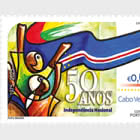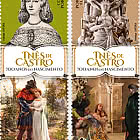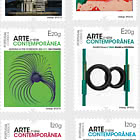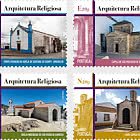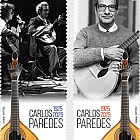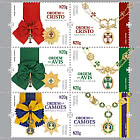Europa - Azores
At all latitudes, more or less proficient musicians give off melodies and sounds from musical instruments which, besides bringing beauty and joy to our lives, are an identifier of peoples and regions.
Throughout time, woodwind, string and percussion instruments have accompanied songs and dances, summoned to banish tiredness after long periods of work or to celebrate festivities of secular or religious inspiration.
Geographic isolation favours the preservation of these artefacts in their archaic version. This is the case of the Gaita de Fole (Bagpipe), in the Miranda Plateau – northeast of mainland Portugal. Meanwhile, in the island territory, the earliest musical tradition is represented by the Viola da Terra (Viola from the homeland), in the Azores, and the Brinquinho in Madeira.
Also called Gaita Transmontana or Gaita Mirandesa, the Gaita de Fole (Bagpipe) was until recently made by hand, using typical materials from local agro-pastoralism. It is regarded throughout Europe as a rare specimen of this type of aerophone, for having kept its medieval pattern and peculiar tuning precepts.
It was the pipers themselves who chose the woods and selected the kid with which to make the bagpipes. It was up to them to not only build and tune the bagpipe, but also to learn and teach the repertoire and liven-up dances and processions. Playing the Bagpipe is a difficult art that requires talent and training, unleashing an intense, round and warm sound.
The viola must have reached the Azores inside the luggage of the first settlers coming from the Continent. Then, in the islands, it became a chordophone of distinctive features, called Viola da Terra (Viola from the homeland). It stands out for its metallic double strings, which give it a more pure sound, and for its vibrant timbre, sometimes making a melody sound like a cry.
This instrument, also known as Wire Viola or Twin-Heart Viola, is present in the nine Azorean islands. According to conventional wisdom, the two hearts of the Viola evoke the nostalgia felt by those who left and those who stayed, in a region marked by emigration. According to the elders, the Goshawk, or Red Kite – the bird that is said to have named the archipelago –, is peeking through the easel of the Viola.
The Brinquinho, or Bailhinho, is a percussion instrument that became a hallmark of the Madeira Archipelago. Visually appealing, it is composed of cloth dolls (usually seven figures, both male and female), dressed in traditional clothing, bearing castanets and ribbons, arranged at the extremities of a rattle-like cane, in two or more circular series of unequal diameter.
Portugal - Recommended stamp issues
WOPA+ recommended stamp issues
| Avatar - Fire and Ash |
| Issued: 03.12.2025 |
| ›New Zealand |
| 50th Anniversary of the Founding of the 24th November Bar Scout |
| Issued: 24.11.2025 |
| ›Montenegro |
| Krisjanis Valdemars |
| Issued: 02.12.2025 |
| ›Latvia |
| Sign Language - Good |
| Issued: 02.12.2025 |
| ›Bosnia and Herzegovina - Republic of Srpska |
| In Memory of the Fallen and Murdered on October 7, 2023 |
| Issued: 08.10.2025 |
| ›Israel |
| Annual Collection Folder (New York) |
| Issued: 05.12.2025 |
| ›United Nations |
| Year Set |
| Issued: 24.11.2025 |
| ›Isle of Man |
| Shipping in the 17th and 18th Centuries - Peat Shipping |
| Issued: 05.12.2025 |
| ›Netherlands |






